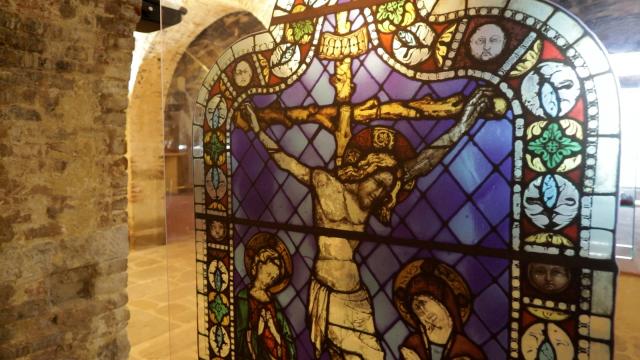Plates of glass and mosaic tiles
Glass Museum

After Venice, in importance and mastery there were the Savona and Tuscan furnaces, from which the tradition of Piegaro probably derived, since the village was linked to the presence of Benedictine abbeys and proximity with the Duomo of Orvieto. In fact, the Piegaro furnace had the possibility and ability to specialise in the production of mosaic tiles, plates of glass for windows, as well as glasses and jugs.
The oldest date to which the presence of glass working at Piegaro can be traced is 1250. The document that indicates this date as being the birth of glass art in Piegaro, drawn up in 1860 by Gonfalonier of the Municipality, Ludovico Vicaroni, mentions: “The art of glass working in Piegaro has been practised since 1250.” It is indisputable that already in the 13th century glass art was practised in the area: the presence of monastic orders diffusing artisan techniques and inclusion in the territory in the Umbria-Tuscan road network could have been driving forces for the birth of glass processing.
The source of fuel made up of vast woods in the area should be considered as a fundamental element. Historical documents from 1321 proffer certain information about the participation in the decorations of the Duomo of Orvieto. From the study of documents, it appears that for the creation of the Orvieto mosaic tiles there was a close collaboration between the workers of Piegaro and Monte Leone: cited by sources such as the laboratory of coloured glass, already in mediaeval times Piegaro offered material and skilled, qualified labour in coloured glass processing.